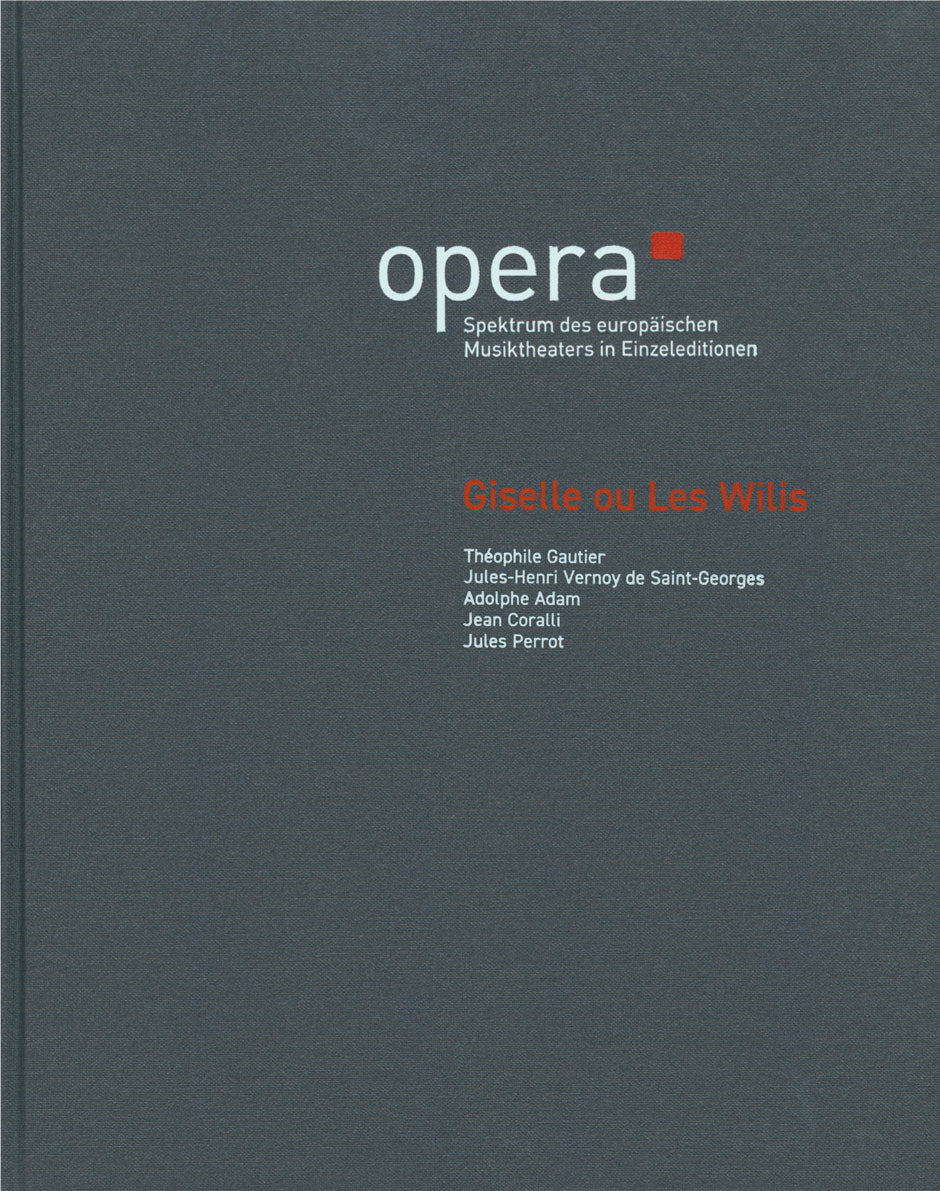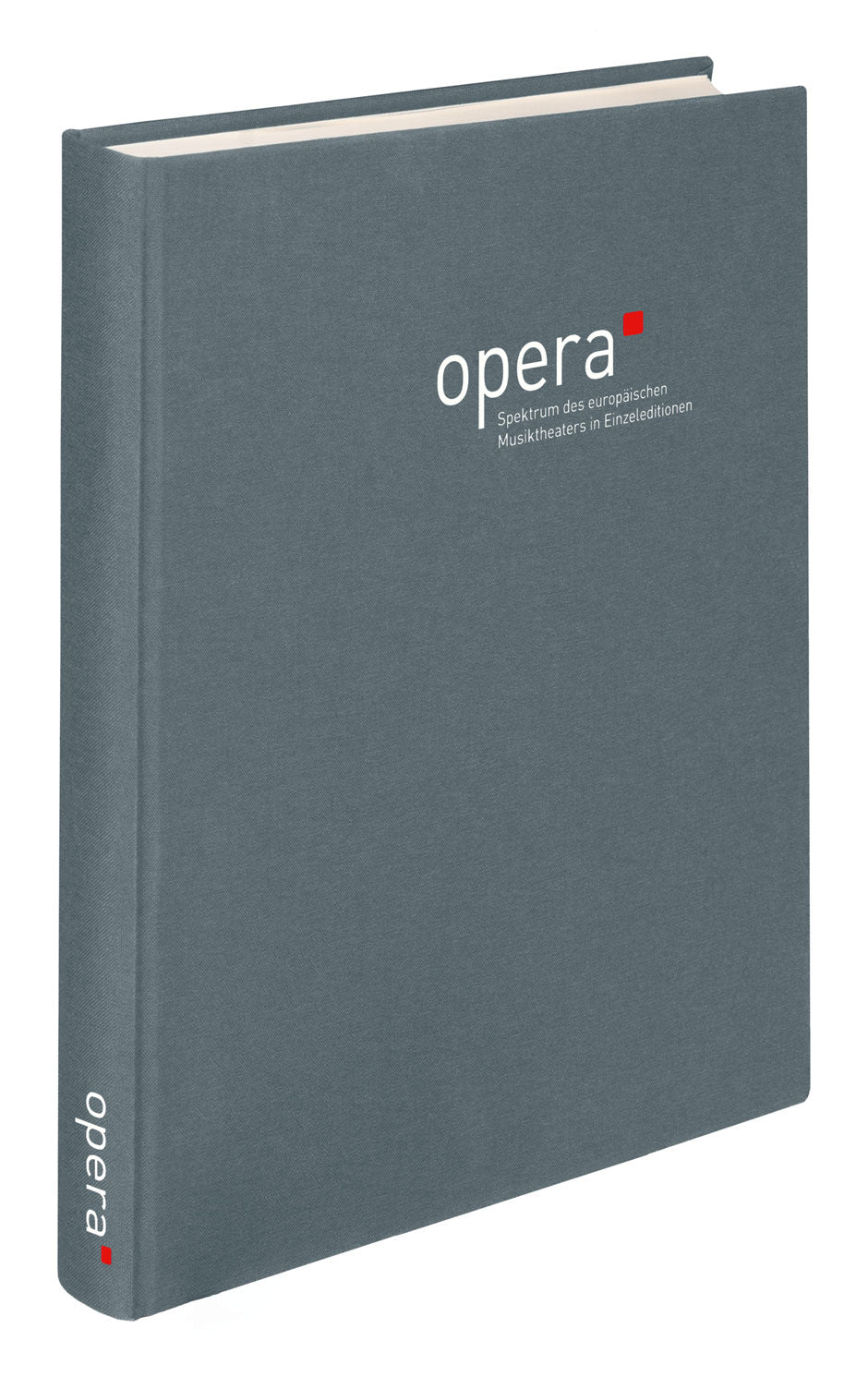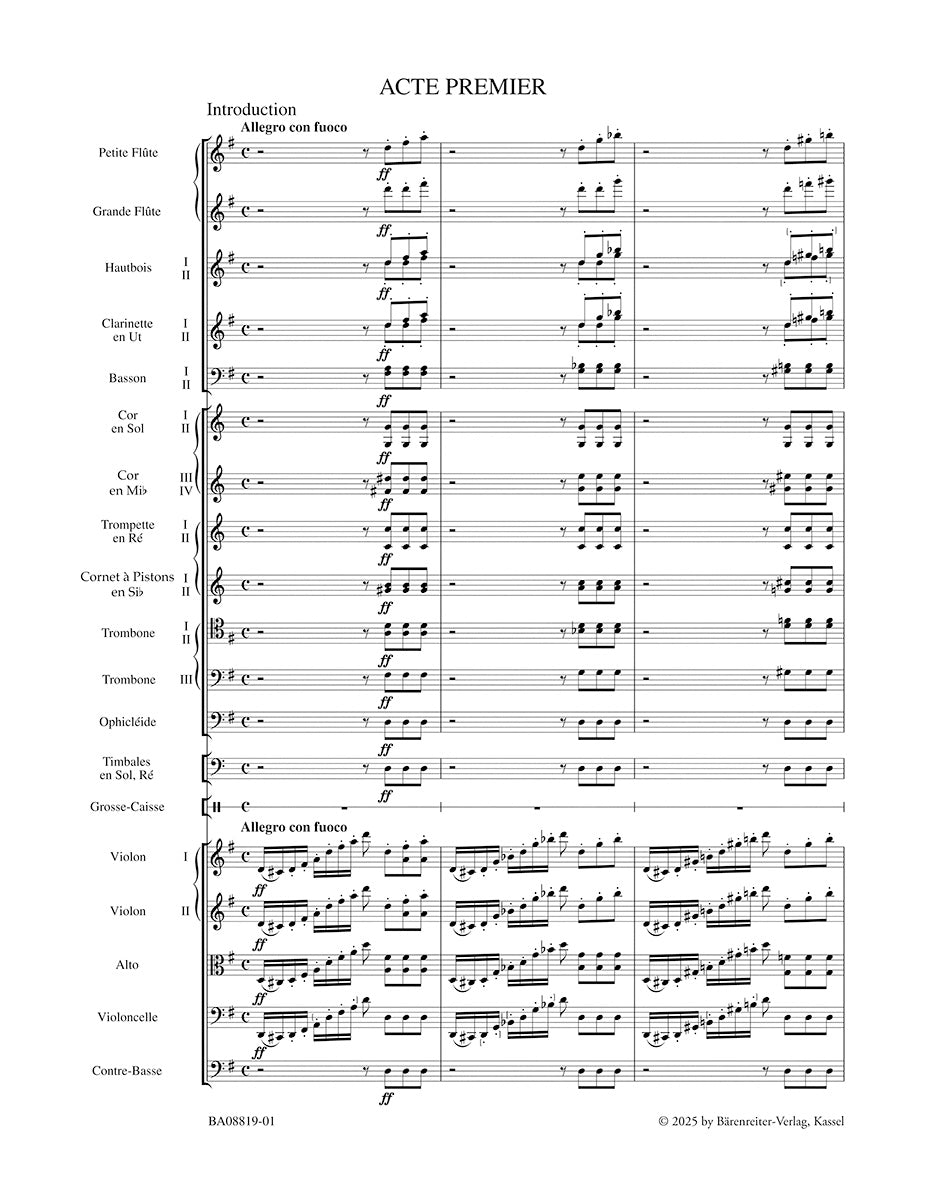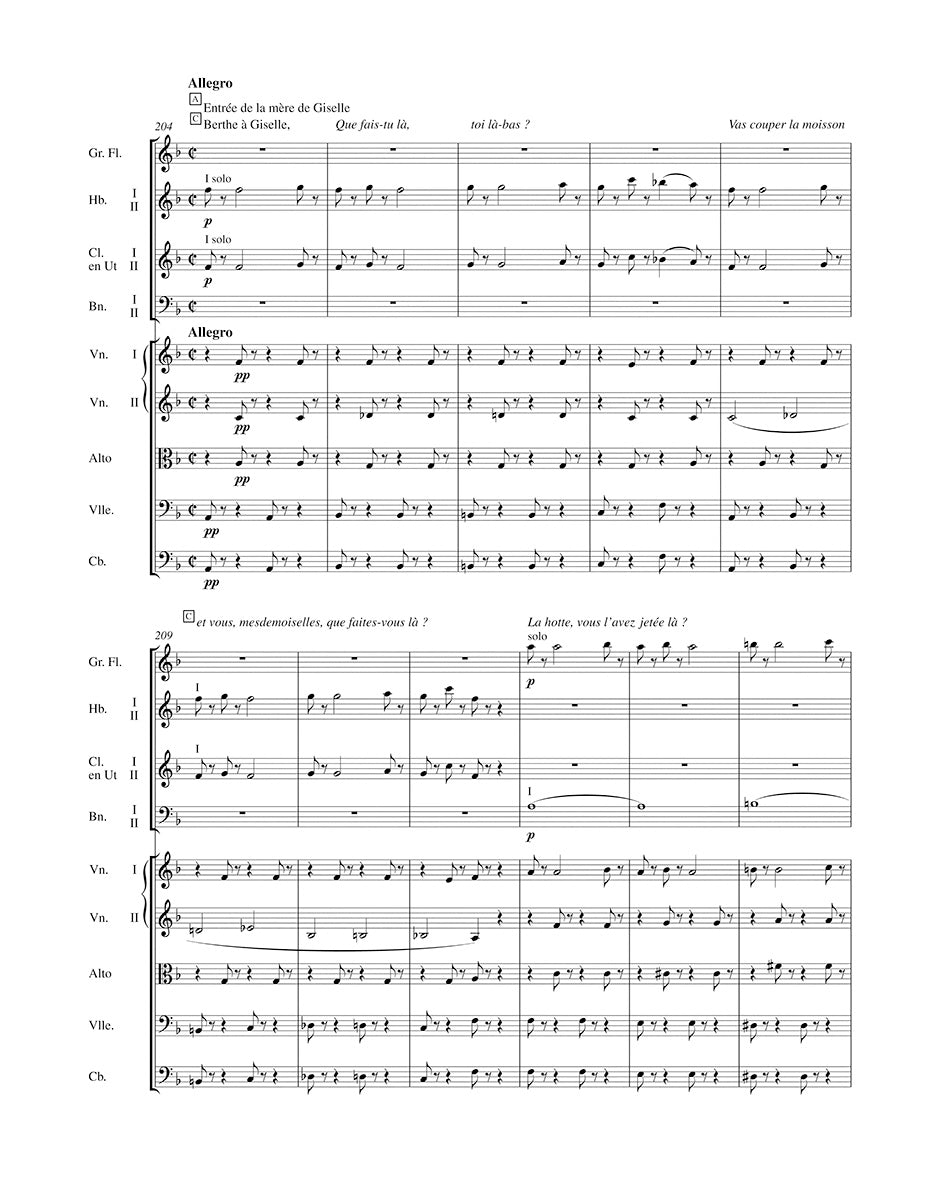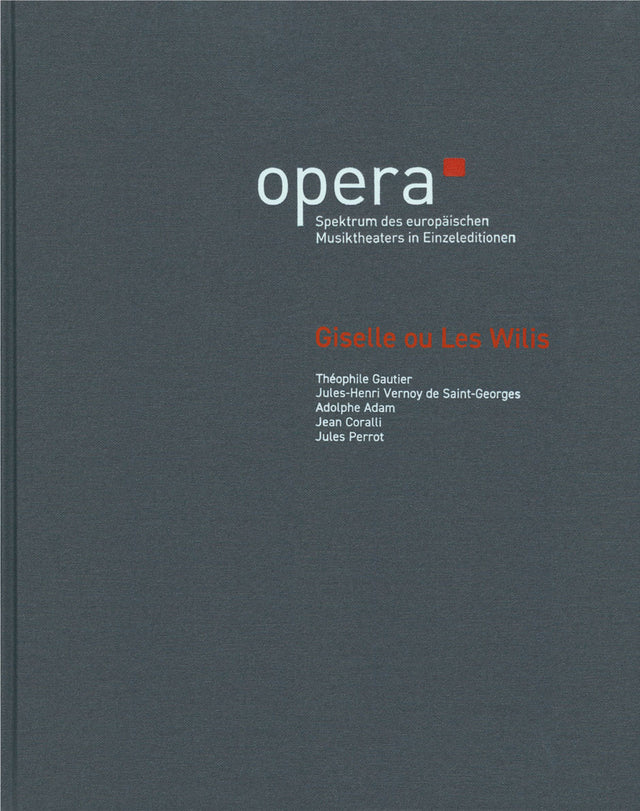Adam: Giselle ou Les Wilis
OPERA Spectrum of European Music Theatre Volume 6
Expected to ship in about a week.
- Composer: Adolphe Adam (1803-1856)
- Editors: Marian Smith, Doug Fullington
- Format: Full Score
- Instrumentation: Orchestra
- Work: Giselle (Ballet) (1841)
- Binding: Hardcover
- ISMN:
- Size: 10.6 x 13.0 inches
- Pages: 749
- Urtext / Critical Edition
Description
"Giselle ou Les Wilis" – now known as "Giselle" – was first performed at the Paris Opéra on 28 June 1841 to a rapturous reception, and it remains today a popular fixture in the international ballet repertory. Yet the idiosyncratic way its score has been handed down to us in the twenty-first century has caused many of its striking and meaningful elements to be obscured.
Some versions of "Giselle" were, for practical reasons, orchestrated from piano reductions. Others drew more closely from the Paris Opéra's sources but have been altered over the years. Still others have relied on a scribally copied orchestra score at the Opéra (apparently a reference copy not used in performance) that requires scrupulous cross-checking with the autograph and orchestra parts because of its many copying errors.
Thus, conductors today have been obliged to rely upon versions of "Giselle" derived from problematic sources, often with unattributed and anachronistic orchestrations, mistakes, altered dynamics, and altered notes. No authentic edition of the score has been produced until now. Drawing from all available source material, including heretofore unexamined original orchestra parts used at the Paris Opéra from 1841 to 1868 and Adolphe Adam's autograph composing score, Doug Fullington and Marian Smith have produced a practicable score intended for stage productions, both traditional and otherwise, as well as concert performances and recordings. Traditional interpolations, such as the now-standard Act I variation for Giselle, the so-called "Peasant" pas de deux by Friedrich Burgmüller, and the now-standard Act II waltz variation for Giselle, are included.
The sixth volume of the OPERA series consists of the cloth-bound volume and a credit card USB flash drive. The enclosed USB credit card flash drive (Edirom) contains all the sources, the text parts as well as the music edition and the Critical Commentary
Publishers use a lot of words to describe what they sell, and we know it can be confusing. We've tried to be as clear as possible to make sure you get exactly what you are looking for. Below are descriptions of the terms that we use to describe the various formats that music often comes in.
Choral Score
A score for vocalists that only contains the vocal lines. The instrumental parts are not there for reference. Generally, cheaper than a vocal score and requires multiple copies for purchase.
Facsimile
Reproductions of the original hand-written scores from the composer.
Full Score
For ensemble music, this indicates that the edition contains all parts on a single system (there are not separate parts for each player). In larger ensembles, this is for the conductor.
Hardcover
Hardbound. Generally either linen-covered or half-leather.
Orchestral Parts
Similar to a wind set, this is a collection of parts. In the case of strings, the numbers listed are the number of copies included, though generally these are available individually (often with minimum quantities required).
Paperback
When publishers offer multiple bindings (e.g. hardcover) or study scores, this is the "standard" version. If you're planning to play the music, this is probably what you want.
Performance / Playing Score
A score of the music containing all parts on one system, intended for players to share. There are not separate parts for each player.
Set of Parts
For ensemble music, this indicates that there are separate individual parts for each player.
Solo Part with Piano Reduction
For solo pieces with orchestra, this is a version that contains a piano reduction of the orchestra parts. For piano pieces, two copies are typically needed for performance.
Study Score
A small (think choral size) copy of the complete score meant for studying, and not playing. They make great add-ons when learning concertos and small chamber works.
Vocal Score
A score prepared for vocalists that includes the piano/organ part or a reduction of the instrumental parts.
Wind Set
For orchestral music, this is a collection of wind and percussion parts. The specific quantities of each instrument are notated.
With Audio
In addition to the printed music, the edition contains recordings of the pieces. This may be an included CD, or access to files on the internet.
With / Without Fingering (Markings)
Some publishers prepare two copies - a pure Urtext edition that includes no fingering (or bowing) suggestions and a lightly edited version that includes a minimal number of editorial markings.

